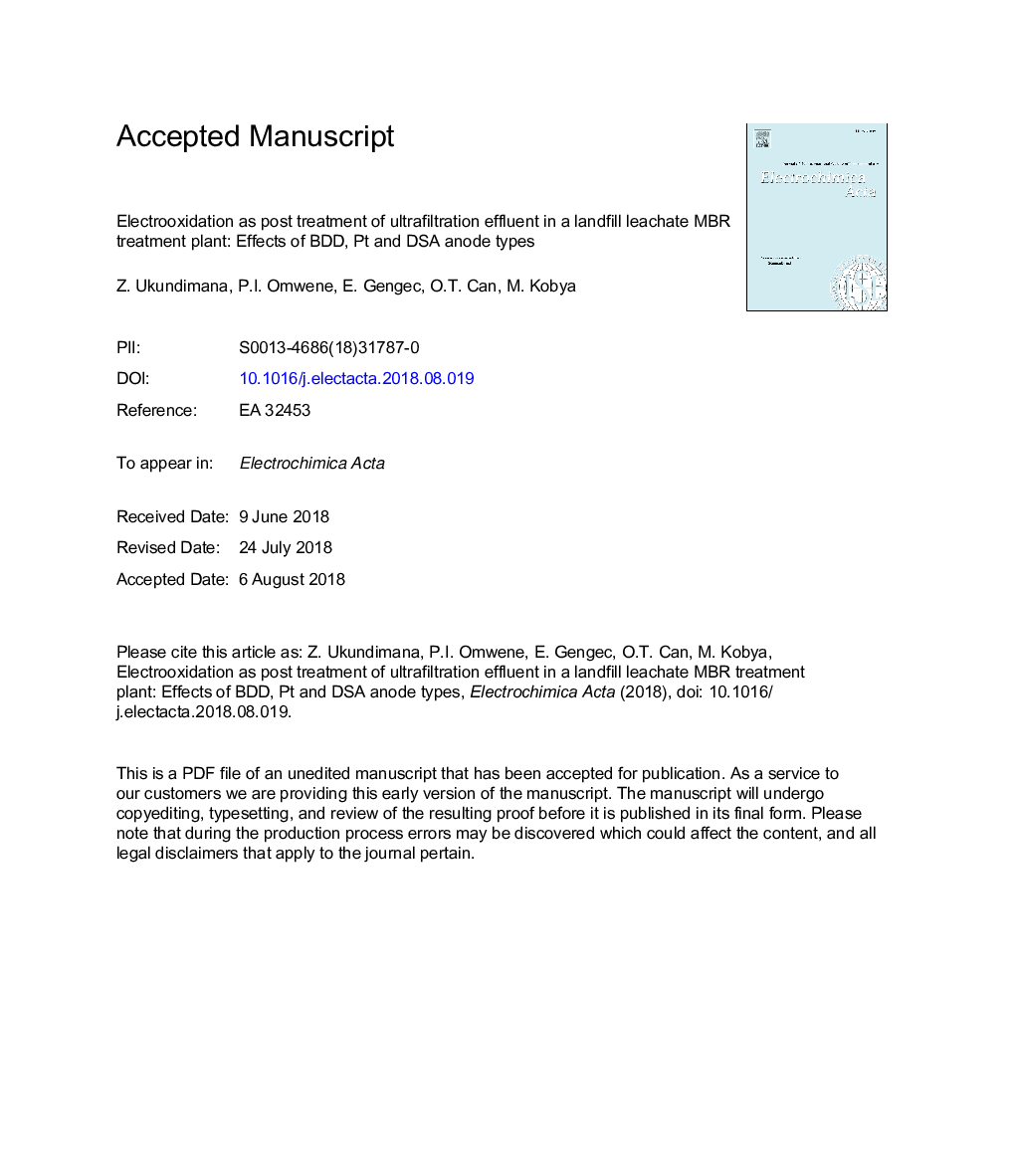| Article ID | Journal | Published Year | Pages | File Type |
|---|---|---|---|---|
| 11000499 | Electrochimica Acta | 2018 | 28 Pages |
Abstract
In this study, ultrafiltration (UF) effluent from a landfill leachate treatment plant (equipped with anoxic-aerobic oxidation and UF) was treated by Electrooxidation (EO) process in a batch reactor using different dimensionally stable electrodes (DSA anodes: Ti/PtO2-IrO2, Ti/RuO2-TiO2, Ti/RuO2-IrO2, and Ti/IrO2-Ta2O5), boron doped diamond (BDD) and Pt as anode and stainless-steel electrode as cathode. The untreated UF effluent had COD and TOC concentrations of 888â¯mg/L and 398.6â¯mg/L, respectively. Overall, BDD anode performed better than the other DSA anodes under the tested conditions with removal efficiencies of 64.9-86.8% and 68.2-92.0% for TOC and COD, respectively. The calculated energy consumptions at maximum removal efficiencies were 111.2â¯kWh per m3 (136.01â¯kWh/kg COD and 321.27â¯kWh/kg TOC) at 360 A/m2 and 4â¯h of treatment time for BDD anode. However, TOC and COD removal efficiencies of 31.3-86.8% and 36.5-92.0%, respectively, were obtained for the other DSA anodes at current densities between 60 and 360 A/m2 and 4â¯h of treatment time. Energy consumptions and anode efficiency for DSA anodes ranged from 7.3-111.2â¯kWh/m3 (15.67-194.87â¯kWh/kg COD) and 4.40-34.24â¯g COD/Ah m2 (or 1.77-14.62â¯g TOC/Ah m2). The general COD and TOC removal mechanism well fitted the pseudo first-order kinetic model with R2 of >0.94 particularly for BDD electrode under all applied current densities. The chloride content in the leachate promoted indirect oxidation leading to higher COD and TOC removal efficiencies. Moreover, high performance size exclusion chromatography (HPSEC) was used to evaluate the variation of fractions in wastewater during EO.
Related Topics
Physical Sciences and Engineering
Chemical Engineering
Chemical Engineering (General)
Authors
Z. Ukundimana, P.I. Omwene, E. Gengec, O.T. Can, M. Kobya,
